Movies●0 min read●
Livin’ In The Gangster’s Paradise: The Era Of Gangster Movies
As far as we can go back in the early days of cinema, gangster movies have been a part of our life. And whether we agree or not, the audience of all classes is both fascinated and repulsed by the dark lifestyle and the darker underbelly of society with passion and crime with gunfights and murder.
The film industry turned the gangsters into anti-heroes or anti-protagonists. And that is how they romanticize these gangsters as some kind of rebel against the shackles of societal authority, who refuse to accept the stereotypical mediocrity of society.
With these movies, we were left awe-stricken with horror and shock after seeing the intense brutality and indiscriminating passion for violence that these men in well-tailored suits are capable of.
But we, as the audience, are absolutely spellbound, rather, we are in awe of how they perpetrate swift justice upon whoever dared to cross them. It is possible that we can be highly repulsed by their way of making money. And their lifestyle, full of drugs and prostitution, that become a plague to our society.
But we can’t deny the fact that the liberty and freedom they tend to enjoy is what attracts us to see more gangster movies. Also because we, too, want to have that taste of freedom and financial freedom, along with their glamorous life.
Crime And Gangster Movies
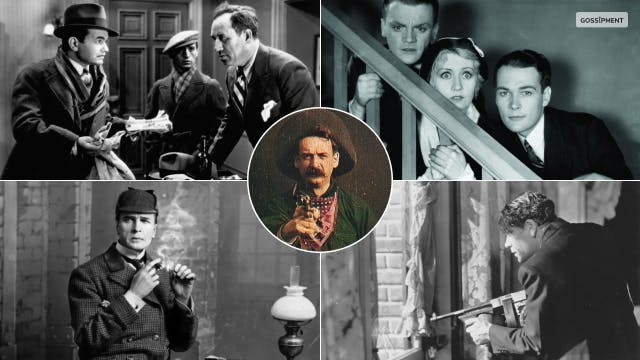
During the 1940s, the emergence of a new type of cinema was born involving crime thrillers that revolved around the themes of cynicism and darker film genres. This era of film is quite similar to that of the film noir era in France.
Although the French Noir era of French movies was based on post-war detective and mystery films. This may seem different from gangster movies, but the underlying theme of darkness and cynicism. But just like gangster movies, these movies have similar themes of suspense, crime, revenge, and police intervention.
When it comes to gangster movies, the themes are usually street-smarts, materialistic, megalo-maniac, and self-destructive. They are shot in larger cities to set the landscape and atmosphere for the movie.
Certain subjects, like dark streets and nightclubs with neon light signs, fast vintage cars, cash piles, contrabands, sleazy bars, and shady houses, are something that is exceptional to any gangster film. Gangster movies are incomplete without a few exotic locales, wealth, and adventure.
If you love watching gangster movies, then you would have noticed that most of these gangster movies are morality tales. Consider Horatio Alger or ‘Pursuit of the American Dream.
Both these movies show an inverted world where criminals live a life of success and wealth. Mostly coming from immigrant families. These families are often very poor and fall prey to these gangster lifestyles in the pursuit of getting wealthy, status, and power.
Early Crime- Gangster Films Until Dawn Of The Talkies
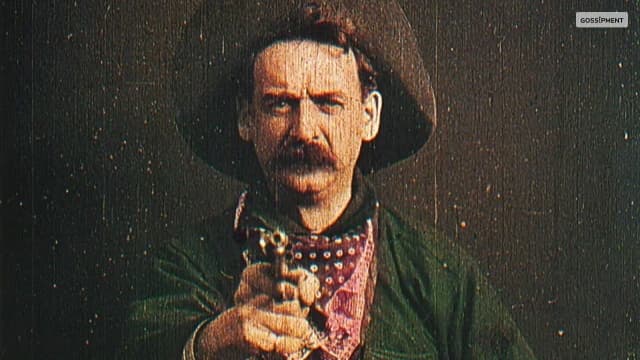
One of the greatest early crime and gangster movies during the silent era was Edwin S. Porter’s “The Great Trian Robbery (1903)”. The movie holds up really great, considering it is one of the early crime movies.
But in respect of timing, the earliest or first crime film was “Sherlock Holmes Baffled (1900).” It was a 45-second long short film. Later in 1905, Vitagraph released “The Adventures of Sherlock Holmes,” which is considered to be the first Sherlock Holmes film ever created for the audience.
A few more films of that era that was considered to be gangster movies were D.W. Griffith’s “The Musketeers of Pig Alley (1912)” the film is based on organized crime.
| Although it is to be noted that there are a few more of Griffith’s one-reel gangster films. And they are The Moonshiners (1904), A Desperate Encounter Between Burglars And Police (1905), and also “The Black Hand (1906).” |
Expressionistic German Crime Films
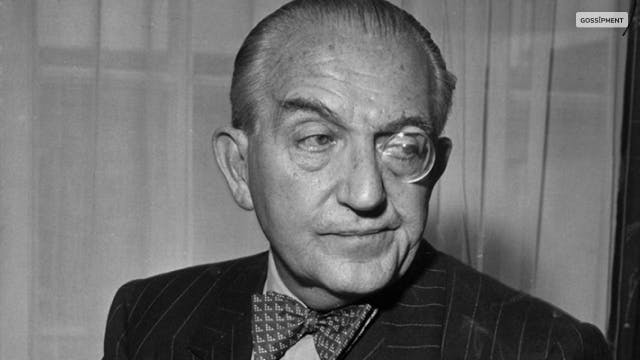
Three of the most talented directors that geared the black and white era of German expressionistic crime films were,
■ Fritz Lang
■ Robert Wiene
■ F.W. Murnau
These three directors are known for their sharp-angle shots, chiaroscuro lighting, and last but not least, monstrous characters. (insane scientists, crazed individuals, or insane doctors)
One of the most noteworthy movies of that era was “The Cabinet of Dr. Caligari (1919/1920).” The movie was directed by Robert Wiene.
The movie is about “a ghost-like hypnotist therapist at a fairground carnival named Dr. Caligari. He used his power of hypnotism to commit crimes through his performing somnambulist Cesare.”
Another great standout movie of that era was F.W. Murnau’s “Sunrise (1927),” it is considered as a silent classic movie.
The movie is about “a country village farmer who fell for the allure of a sophisticated, vampish seductress/temptress from the City. She tempted him under the moonlight in a swamp, persuading him to devise a murderous plan to kill his pure, innocent wife – by drowning her during a trip to the City.”
Lastly, one of the most influential films of the German expressionistic film was M (1931), the film was directed by Fritz Lang.
The film is “ is a psychological thriller about a child molester serial killer. The pedophile-psychopath was identified as Hans Beckett- his coat back was marked in chalk with the letter M. He was caught hiding in an attic and taken to a large abandoned brewery building to stand trial, where he was questioned by a panel of underworld boss leaders.”
Explore More: Watching A Hollywood Sexy Movie: Best Hollywood Sexy Movies Of All Time
The Gangster Film In The Era Of The “Talking Picture”
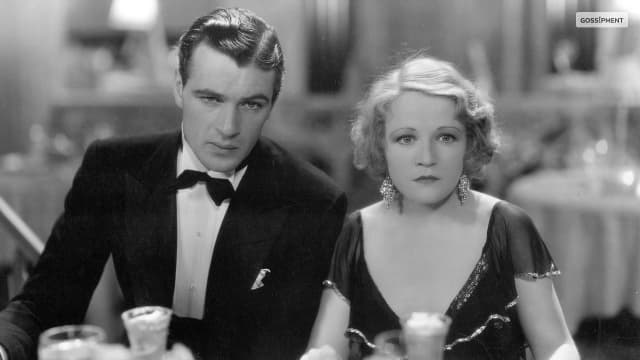
The era of gangster movies truly began in the 1930s, when the movies truly became entertaining and highly popular among the audience. The thrill of o-screen violence, lawlessness, and crime was at an all-time high.
After the events of the St.Valentine’s Day Massacre and the Prohibition Era. And in addition, the presence of real-life gangsters such as “Pretty Boy” Floyd, Al Capone, “Baby Face” Nelson, and John Dillinger. They have escalated organized crime and violence, increasing the demand for this genre.
The movies in this era were all about that bad boy attitude, seeking the thrill of danger and violence. The want for wealth and power was at an extreme level, and voluntary participation in gangs was high. These gangster movies showcased swaggering, wily, cruel, tough, urban gangsters and law-defying bootlegging.
A few of the movies of this era were “The Lights Of New York (1928),” “City Streets (1931),” and “Bad Company (1931).”
Warner Bros: The Gangster Studio
Back in the 1930s, Warner Bros. Studios was considered the par excellence gangster studio. The actors of Warner Bros. studios were defined and established as the tough guys in the genre.
These actors are Humphrey Bogart, Edward G. Robinson, and James Cagney. A few of the earlier gangster movies were George Raft and Paul Muni.
This was the generation that produced classic Hollywood gangster movies that incorporated aspects of the Prohibition Era. This was the era when gangsters were glorified and looked up to.
Three of the most influential movies that were made were,
Little Caesar (1930)
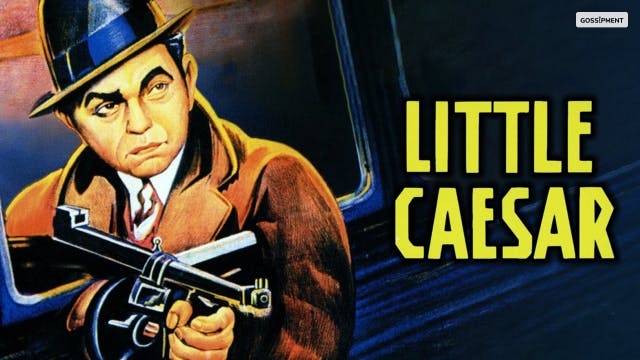
The movie was directed by Director Mervyn LeRoy that starred Edward G. Robinson, he played a “gritty, coarse and ruthless, petty Chicago killer named Caesar Erico (or Rico) Bandello (a flimsy disguise for a characterization of Al Capone), who experienced a rise to prominence and then a rapid downfall.”
This was the movie that established Robinson as the “first great gangster star” of Hollywood. He created the pathway for all the gangster movie actors.
The Public Enemy (1931)
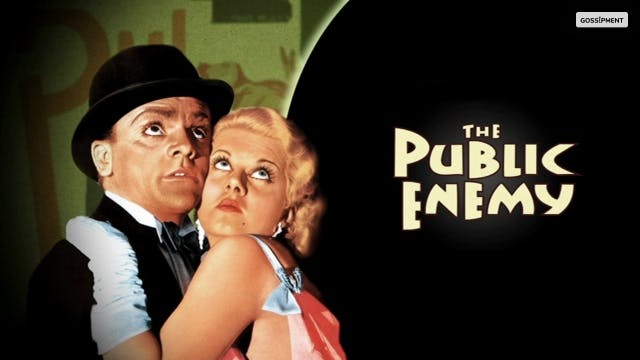
The movie was directed by director William Wellman. The movie starred the amazing James Cagney, this was his breakthrough movie in the industry. He played a fast-talking, cocky, brutal, and nasty bootlegger/criminal with the name Tom Powers.
One of the most memorable gangster movie scenes ever was when Cagney’s character Powers smashed a half grapefruit into his co-star Mae Clarke’s face. She played his on-screen girlfriend.
The main story is about “two brothers, Tom (Cagney) and his straight, uptight brother Mike (Donald Cook), who grew up and pursued very different lifestyles. The pre-Code film emphasized how the early developmental environment clearly contributed to an evolving life of adult crime – and his inevitable gruesome death.”
Scarface: The Shame of the Nation (1932)
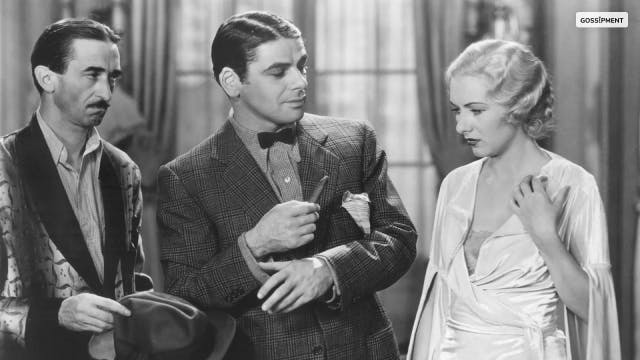
The last film of the three films is Scarface, the movie is directed by director Howard Hawks. The film starred Paul Muni, who is shown as vicious, power-hungry, beastly, and immature hood. His character was loosely based on the infamous gangster and murderer Al Capone.
The movie is an “ultra-violent, raw landmark film in the depiction of Italian-American immigrant gangsters included twenty-eight deaths, and the first use of a machine gun by a gangster.”
The movie brought attention “to the Hays Code for its unsympathetic portrayal of criminals, and there was an ensuing struggle over its release and content. The disturbing portrayal of irresponsible behavior by the gangster almost encourages its attractiveness.”
| “Both The Public Enemy (1931) and Scarface (1932) tried to deflect criticisms that they were sensationalizing the lifestyle of the hoodlums with unconvincing prefaces or disclaimers. In particular, Scarface (1932) began with a critical, written statement to indict gangster hoodlumism and the public’s and government’s indifference. The audience was then blamed for promoting the role of the gangster with its perverse fascination in the phenomenon of mob activity – and then challenged.” |
The Influence Of The Hays Production Code On Gangster Films
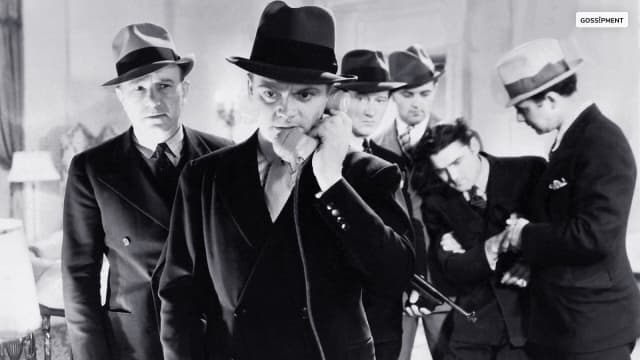
Now, coming to the Hays Production Code, then we have to go back to the early 30s. This Code was the end when it came to “glorifying the criminal and approval of the ruthless methods and accompanying violence of the gangster lifestyle.”
The Production Censorship Code came from the Hays office in the 1930s. This Code “forced studios to make moral pronouncements, present criminals as psychopaths, and end the depiction of the gangster as a folk or tragic hero, de-glorify crime and emphasize that crime didn’t pay. It also demanded minimal details shown during brutal crimes.”
This Code created a type of uproar among the studios, emphasizing “America’s Shame.” It was to change the “criminals to the racket-busting federal agents, private detectives, or ‘good guys’ on the side of the law.”
One of the best examples of this is William Keighley’s film, “G-Men (1935).” The film was from the new “gangster-as-cop” subgenre of gangster movies.
The film starred James Cagney as “a ruthless, impulsive, revenge-seeking, violent FBI agent to infiltrate criminal gangs on a crime spree in the Midwest. Although he was on the side of the law working undercover, he was just as cynical, brutal, and arrogant as he had been in his early gangster films.”
This gangster-as-cops subgenre was portrayed in more movies from the same era, such as Bullets of Ballots (1936), where “a police detective went undercover and joined an NYC racket.” Then for the movie The Amazing Dr. Clitterhouse (1938), “Robinson portrayed a brainy crime specialist who joined Rocks Valentine’s gang and soon was masterminding heists.”
Robinson also played a law professor at college and also a special prosecutor who went after and got justice for the movie I Am The Law (1938). Other than this sub-genre, another sub-genre that was developing in this period was the “Cain-and-Abel” sub-genre. This subgenre emphasizes the fact that “crime didn’t pay.”
Gangster movies like Manhattan Melodrama (1934), which showed “Clark Gable and William Powell, two childhood friends, choosing two diametrically opposed lifestyles – gambler/racketeer and prosecuting attorney.”
Then the movie Angels With Dirty Faces (1938) showed “two young slum kids, James Cagney, and Pat O’Brien. Following two different paths, a criminal lifestyle, and the priesthood. In the electrifying finale, Cagney was taken on a long walk to his execution.”
Wrapping Up!
In this brief explanation, you have seen that, over time, gangster movies and genres have reinvented themselves. Came up with new interpretations and even stopped the genre from becoming one-dimensional and flat.
Although they have reinvented themselves over the years, still the main synopsis of gangster movies remains unchanged. So if you like this article surely let me know in the comment section.
Read Also:
■ 15 Beautiful And Hottest Hollywood Actresses Of All Time
■ Highlights Of Met Gala 2023: All You Need To Know About It!
■ Looking For A Steamy Sexual Web Series? Steamiest Shows To Stream Right Now!
